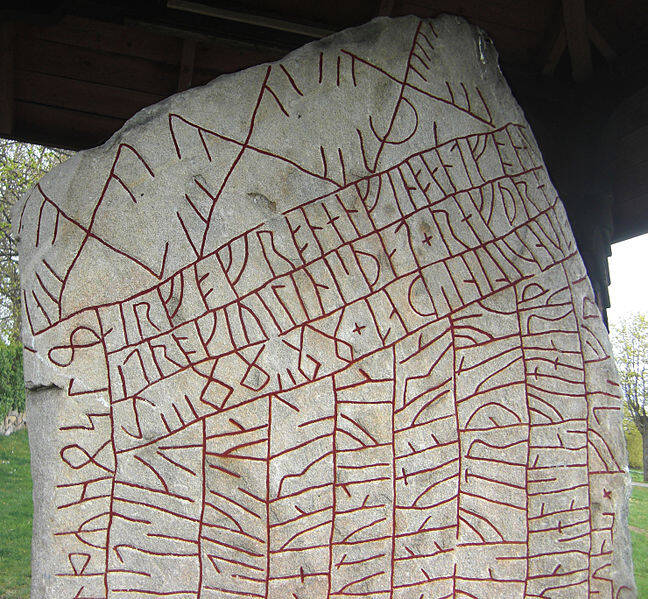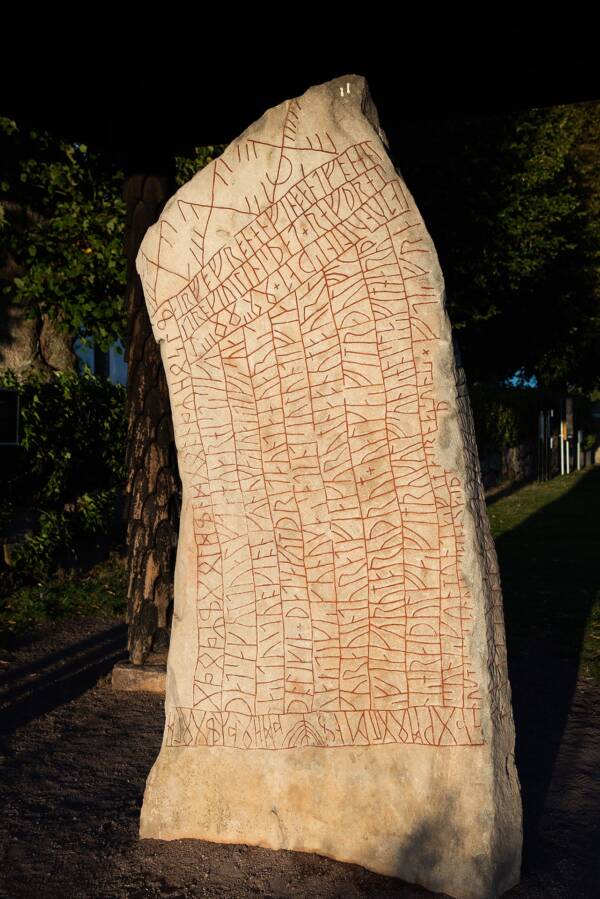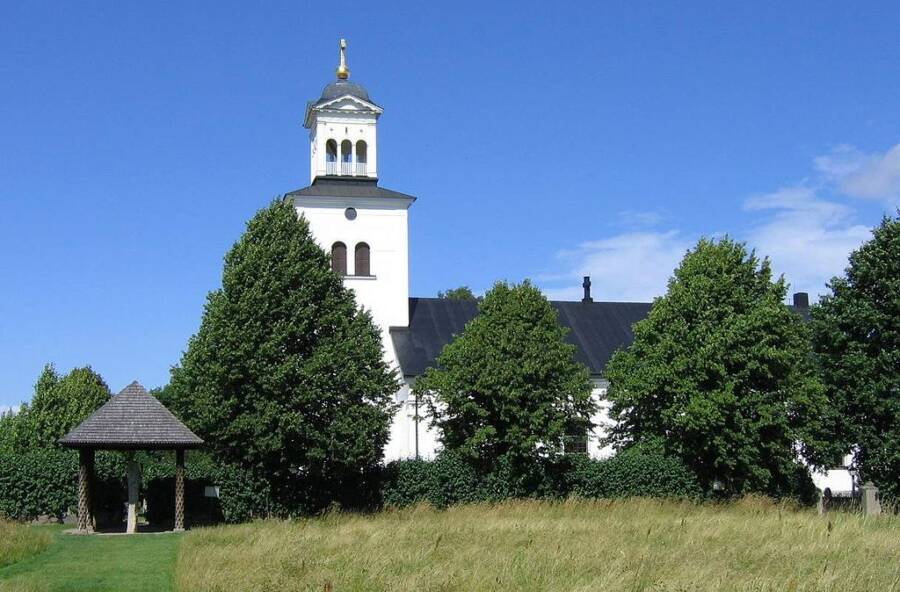After more than 1,000 years of debate, researchers believe they've finally solved the mystery of the world's longest runestone inscription, a Viking slab that describes the real-life Ragnarok apocalypse.

Wikimedia CommonsThe Rok runestone’s inscriptions, which contain allusions to catastrophic climate change.
The Rok (or Rök) stone, unearthed in the ninth century near Sweden’s Lake Vattern, holds the longest runic inscription in the world. The 700-plus runes (early Germanic symbols) covering all five of the stone’s sides were previously believed to have been dedicated to a fallen young man as well as a number of Viking battles, but researchers now believe the messages warned of dire climate change instead.
According to Science Alert, both the famous runestone’s missing chunk and its varying forms of writing have long left scholars unsure about its exact meaning. They do know that the inscriptions refer to “Theodoric,” who some experts believe is Theodoric the Great, the sixth-century ruler of the Ostrogoths in modern-day Italy.
However, the latest theory states that the apocalyptic language on the stone refers not to devastating battles, but to catastrophic climate change instead. Researchers from three Swedish universities believe that the stone contains remembrances of extreme climate change in the past as well as a warning of a similar event to come.
“The inscription deals with an anxiety triggered by a son’s death and the fear of a new climate crisis similar to the catastrophic one after 536 CE,” the authors wrote in the study published by Uppsala University.

University of GothenburgThe Rok runestone dates to the ninth century, is the longest runic inscription in the world, and marks the beginning of Swedish literature.
Archaeological research has shown that, from the years 536 to 550, Scandinavia indeed suffered an immense climate crisis.
When numerous volcanoes erupted, regional temperatures dropped drastically. This, in turn, led to staggering crop failures, subsequent hunger, and mass deaths. Things were so bad that official estimates say the entire Scandinavian Peninsula’s population dropped by 50 percent or more.
The experts involved in this study believe that stories of this destructive event were passed down through the generations — even influencing Norse mythology — and memorialized in objects like the Rok stone.
“Before the Rok runestone was erected, a number of events occurred which must have seemed extremely ominous,” said Bo Graslund, professor in archaeology at Uppsala University and co-author of the paper.”
“A powerful solar storm colored the sky in dramatic shades of red, crop yields suffered from an extremely cold summer, and later a solar eclipse occurred just after sunrise. Even one of these events would have been enough to raise fears of another ‘Fimbulwinter.'”
His cultural allusion here is in reference to “The Great Winter” in Norse mythology. That final, fatal season was believed to herald the arrival of Ragnarok — a series of deadly events that would climax in the end of civilization.

Wikimedia CommonsThe Rok runestone now sits underneath a roof by a church near where it was first discovered.
While these warnings may indeed by the contents of the runes, this has long been debated. While all of the hundreds of runes are entirely legible — despite the fact that they’re more than a millenium old — they’re not precisely decipherable. But the researchers behind the new paper do beleive they’ve know solved the mystery.
“The key to unlocking the inscription was the interdisciplinary approach,” Per Holmberg, University of Gothenburg professor in Swedish and lead researcher said. “Without these collaborations between textual analysis, archaeology, history of religions and runology, it would have been impossible to solve the riddles of the Rok runestone.”
Next, read about the Georgia Guidestones and their instructions on surviving in a post-apocalyptic world. Then, learn some of the most interesting Viking facts that reveal the mysteries of one of history’s most misunderstood civilizations.





